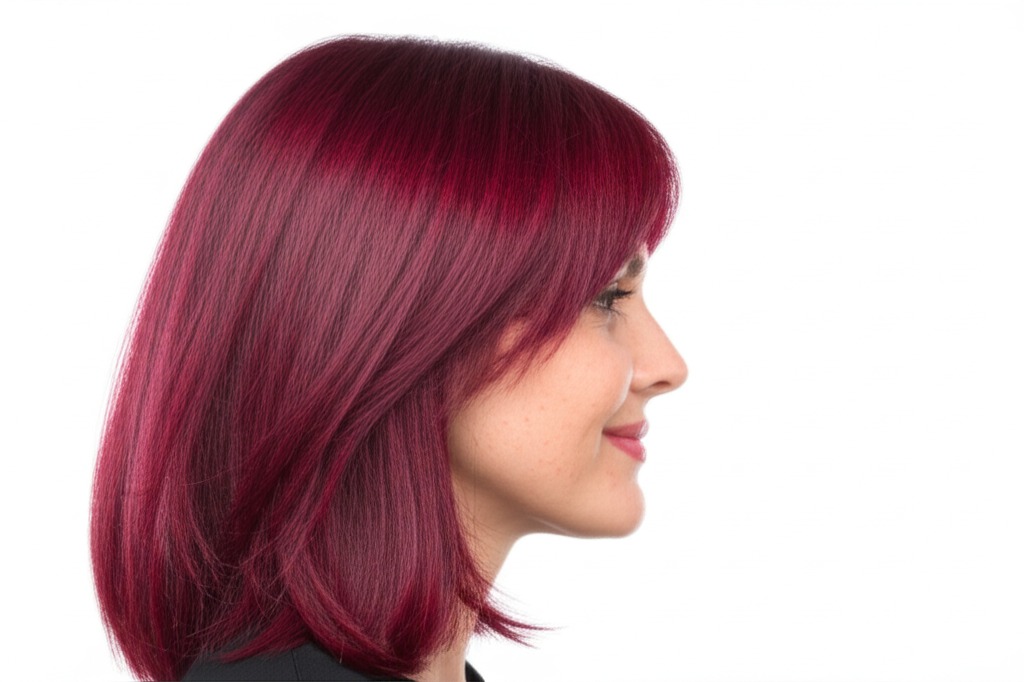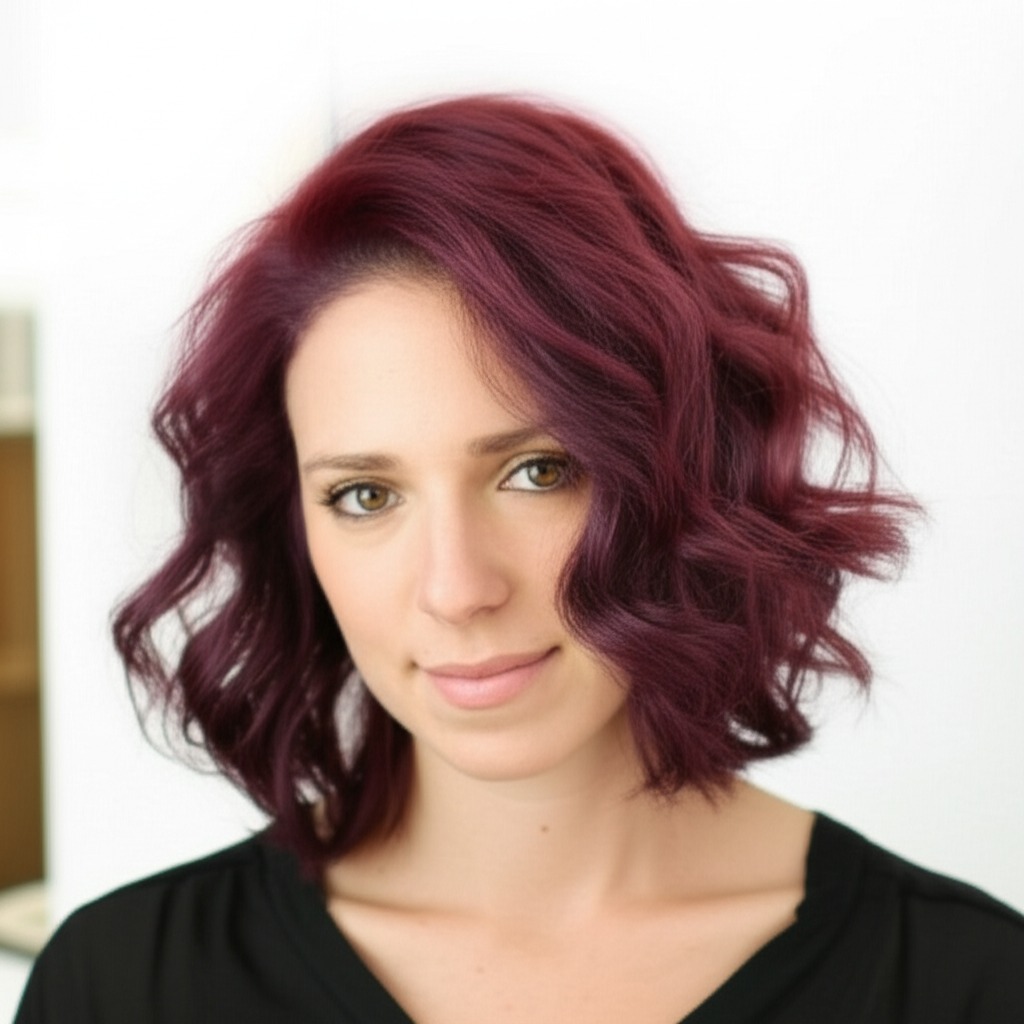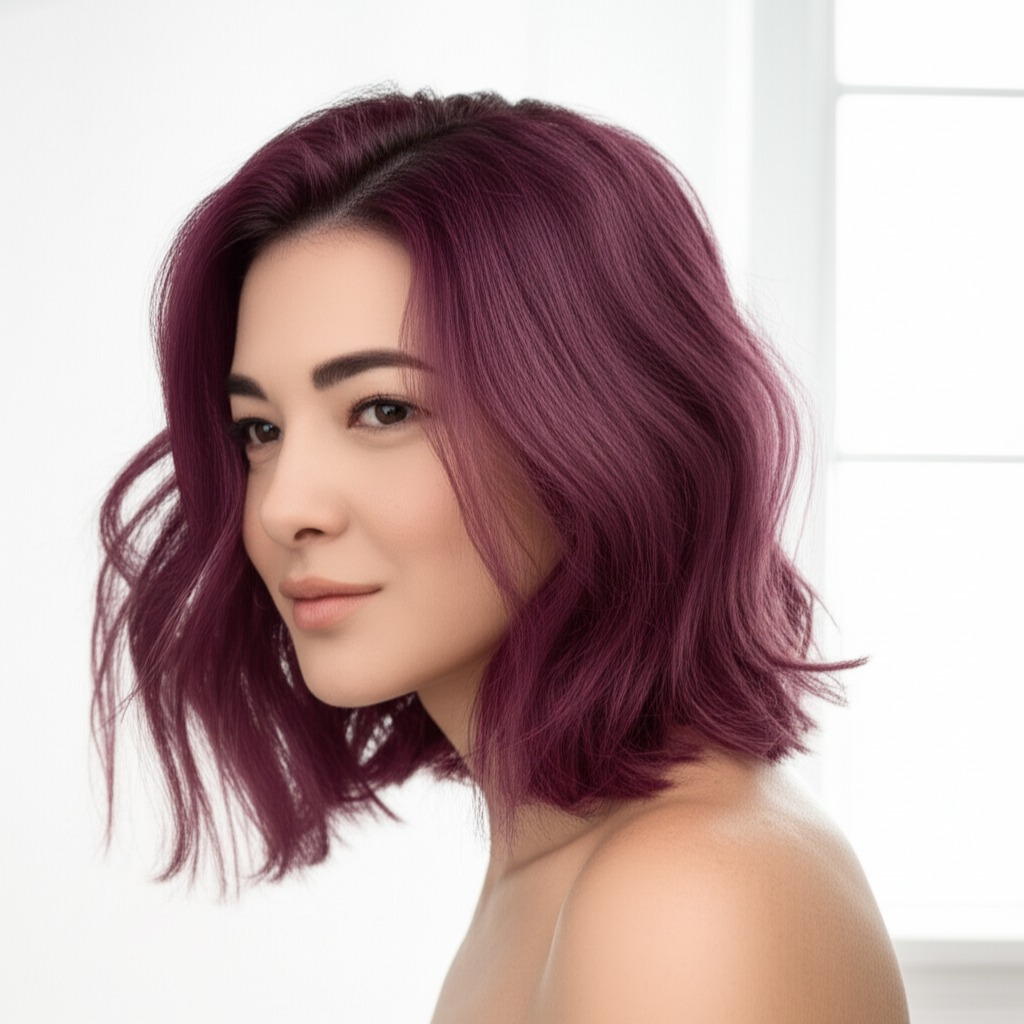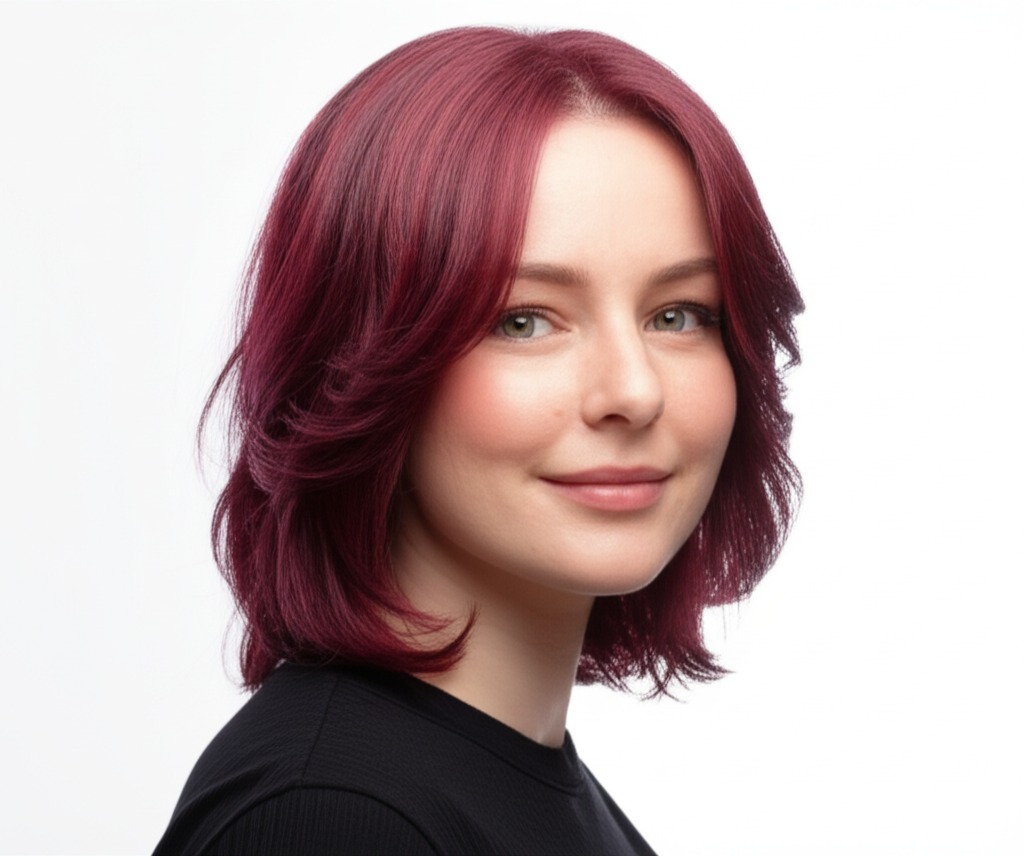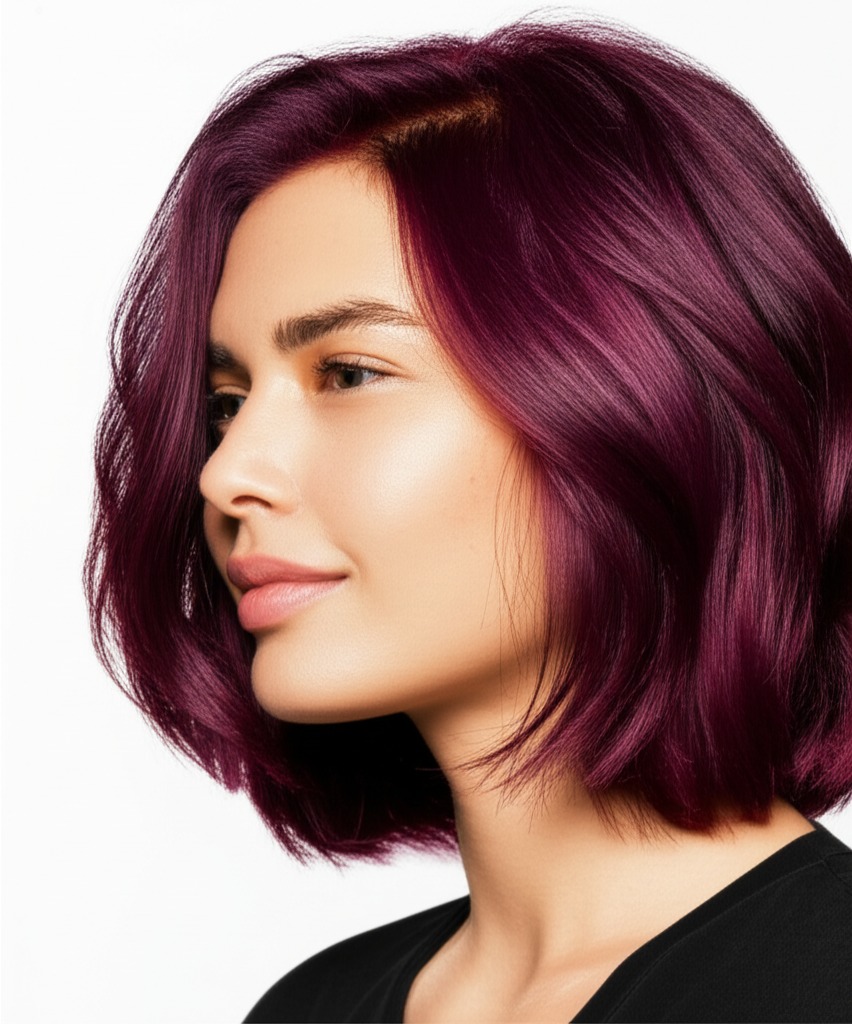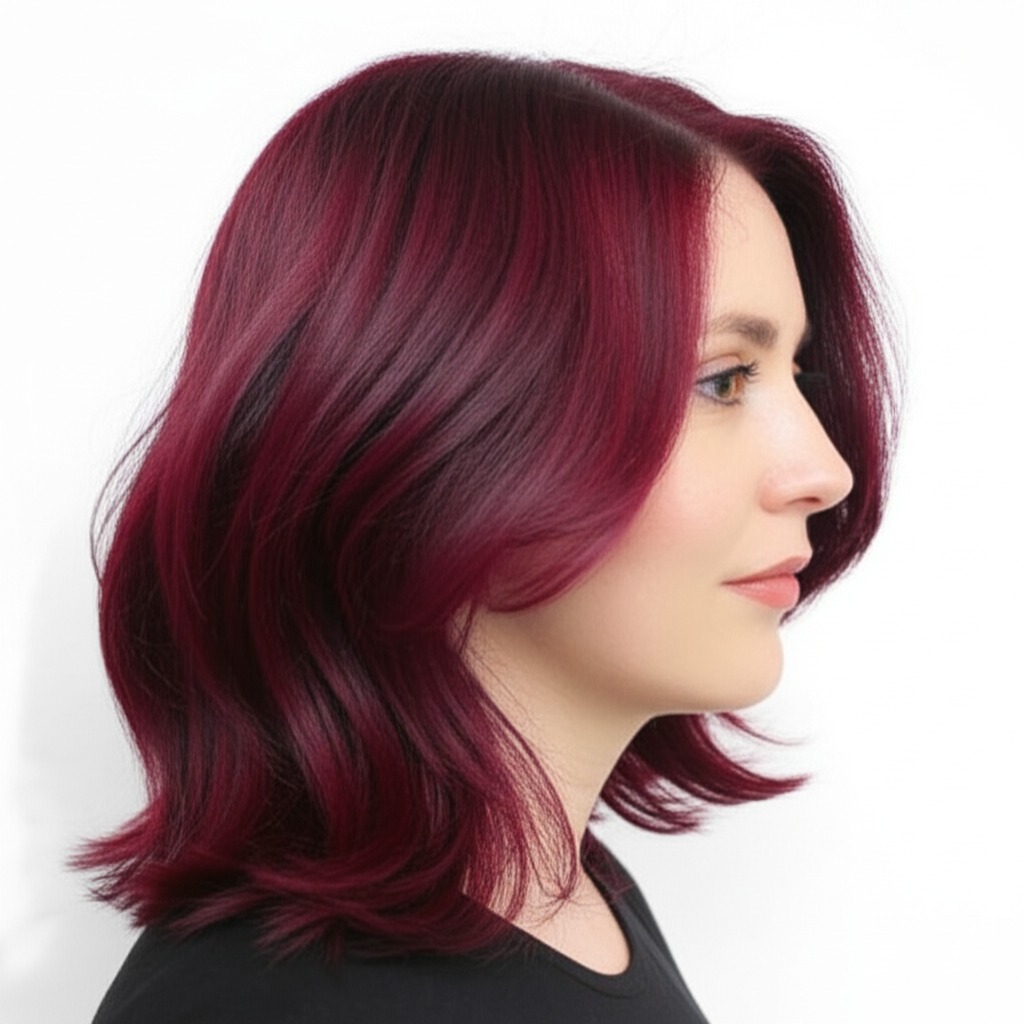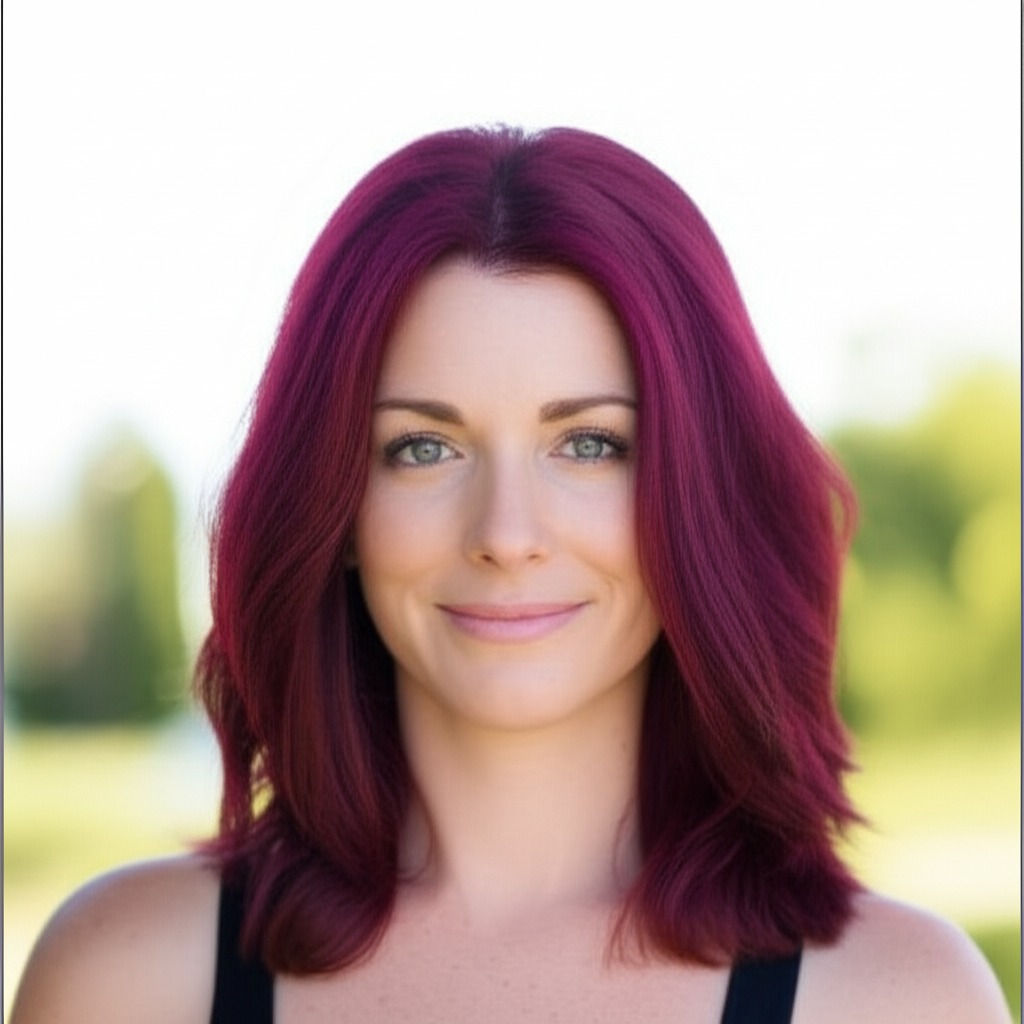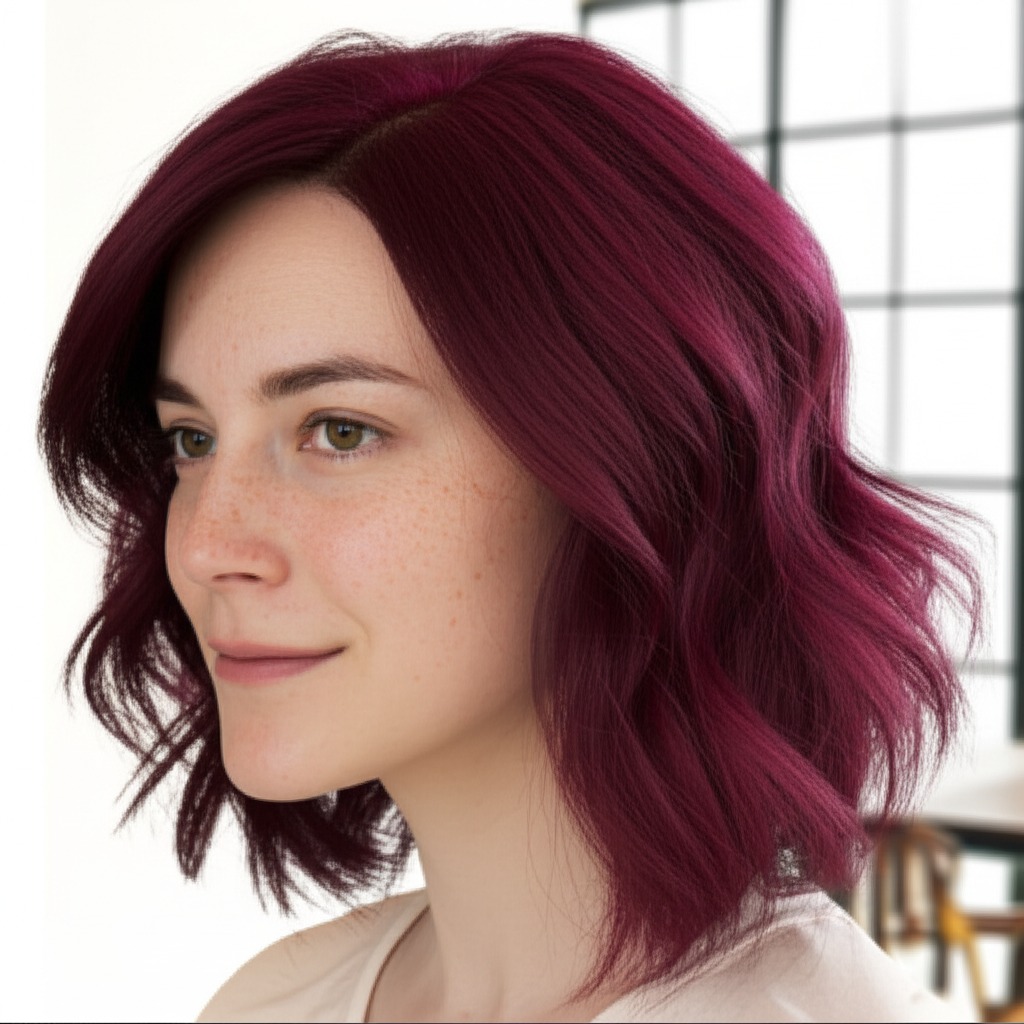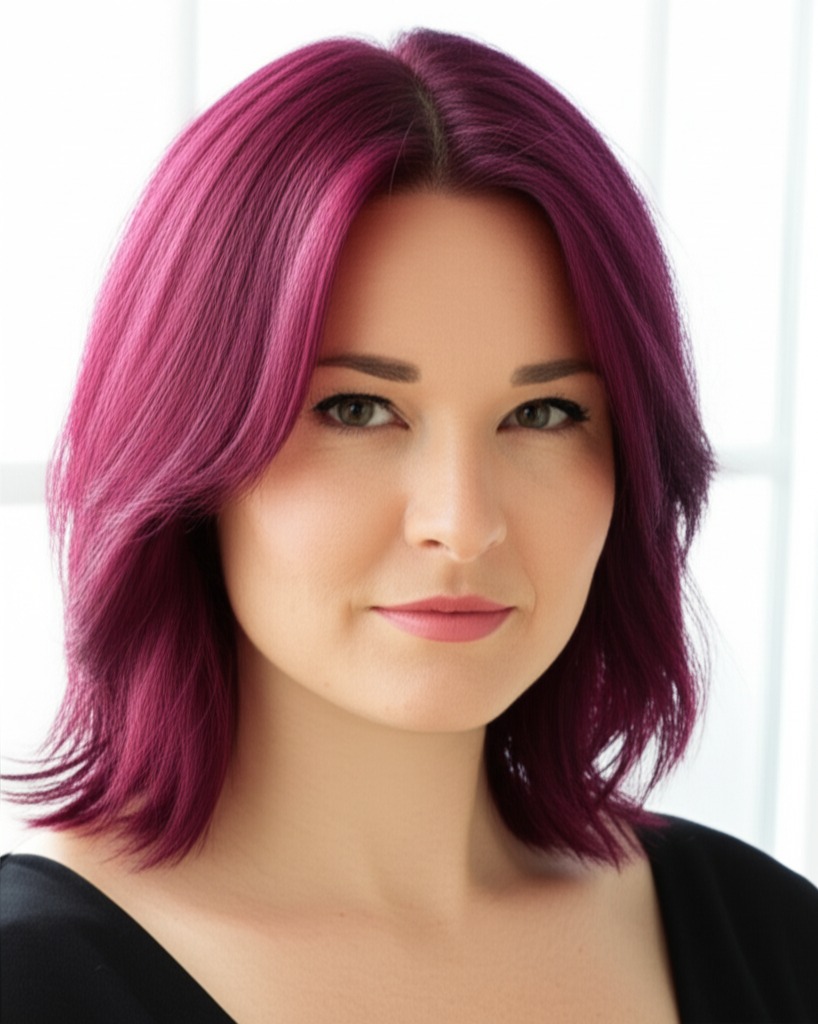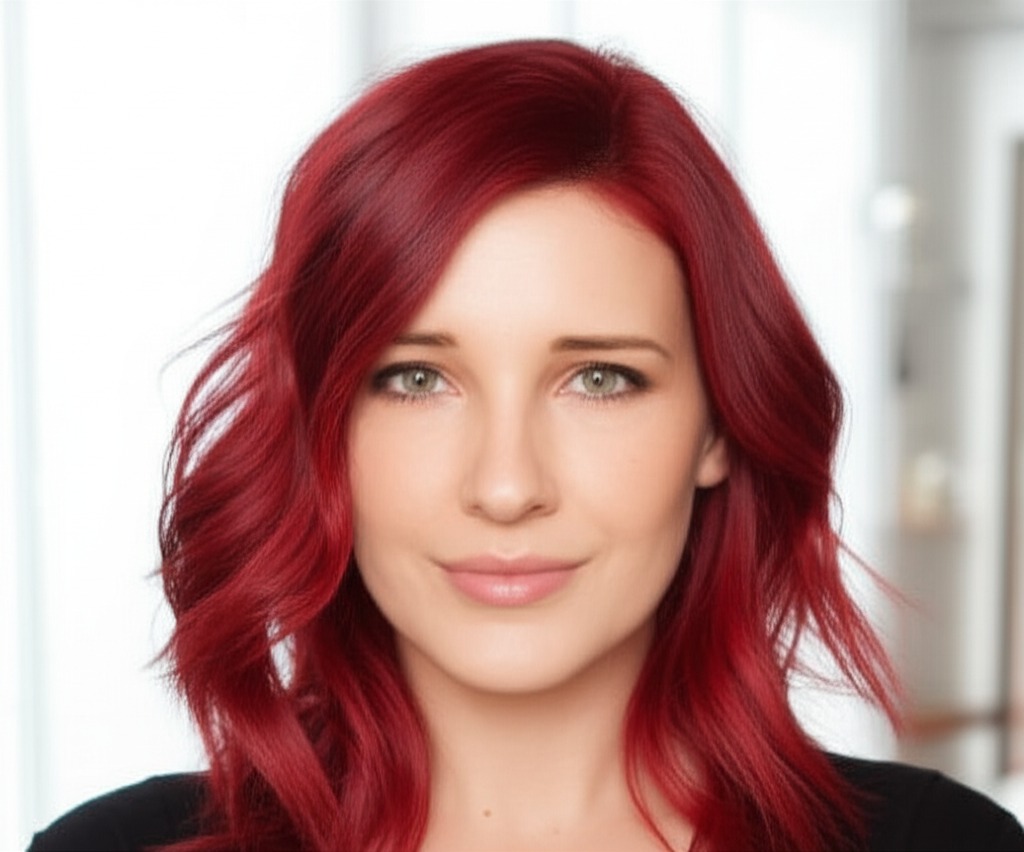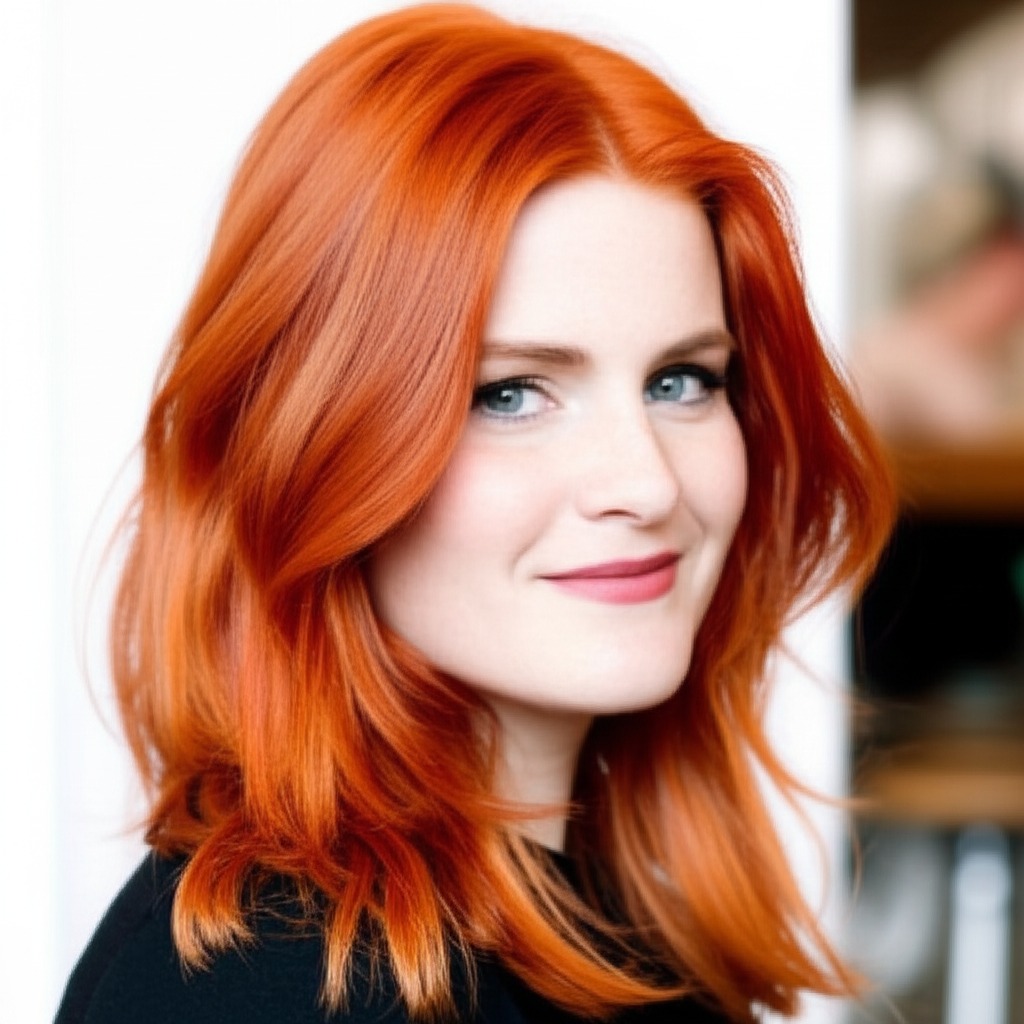#Dive into Deliciousness: Your Guide to Wine Red Hair Color
Wine red hair—it’s rich, it's sophisticated, and it makes a statement! But achieving the right wine red for you requires more than just picking a box of dye. This guide breaks down everything you need to know about this gorgeous hue, from understanding its nuances to keeping it looking fabulous.
#1. Understanding Wine Red: Shades & Depth
Wine red isn’t one single color; it's a family! Think of the spectrum of wines – from a light Pinot Noir to a deep Cabernet Sauvignon. Here’s what you need to know about undertones and levels:
- Undertone: Most wine reds lean towards cool or neutral. Cool wine reds have hints of purple or plum, while neutral ones might show subtle berry notes. Warm wine reds (rare) will have a touch of copper or reddish-brown – these can be tricky to achieve and maintain without brassiness.
- Depth/Levels: Hair color levels range from 1 (jet black) to 10 (lightest blonde). Wine red typically sits between Levels 3-7, depending on the desired intensity.
- Level 3-4: Deep, rich wine – looks incredibly luxurious and works well for darker natural hair.
- Level 5-6: Medium wine – a versatile shade that suits many skin tones.
- Level 7: Lighter wine – brighter and more vibrant, best achieved on lighter starting levels or with significant lightening.
#2. Who Does Wine Red Flatter?
Finding the perfect wine red is all about harmony! Here's a breakdown:
- Skin Tone & Undertone:
- Cool Skin Tones (pink/blue undertones): You’ll shine with cooler, plum-leaning wine reds. Think of it as complementing your skin’s natural coolness.
- Neutral Skin Tones (mix of pink and yellow): Lucky you! You can likely pull off a wider range of wine red shades – experiment to find what you love best.
- Warm Skin Tones (yellow/golden undertones): Be cautious with cooler, purple-leaning wines as they can make your skin look sallow. A more neutral or slightly warmer berry-toned wine can be stunning, but requires careful color matching by a professional to avoid brassiness.
- Eye Color: Wine red complements almost every eye color!
- Brown Eyes: The richness of the wine enhances brown eyes and brings out their warmth.
- Blue/Green Eyes: The contrast between the deep red and lighter eyes is striking and creates a captivating look.
- Hazel Eyes: Wine red can bring out different flecks of color within hazel eyes, making them appear even more vibrant.
- Natural Hair Level Starting Point: This really matters!
- Levels 1-3 (Dark Brown/Black): Requires significant lightening to achieve a true wine red. Expect multiple salon visits and potential damage if rushing the process.
- Levels 4-6 (Medium Brown): A good starting point for many wine reds, requiring less lifting.
- Levels 7-10 (Light Brown/Blonde): Can achieve lighter wine shades with minimal lightening, but color may fade faster.
#3. Technique Options: Choosing Your Application Style
How your stylist applies the color impacts the final look and maintenance.
- Single Process: The most straightforward – a uniform application of color from root to tip. Best for covering grays or achieving a solid, even shade on hair that’s already close to the desired level.
- Highlights/Lowlights: Adds dimension! Wine red highlights brighten the overall look, while lowlights create depth and contrast.
- Babylights: Very fine, subtle highlights – creates a natural-looking wine red effect with lots of movement.
- Gloss/Toner: Used after coloring to refine the tone (cool vs. neutral) and add shine. Essential for maintaining vibrancy!
- Balayage-Effect: Hand-painted application that creates soft, blended highlights – less harsh than traditional highlighting; great for a natural, sun-kissed wine red look.
- Solid Application: Provides an even color payoff, good if you want a bold statement or need to cover grays completely.
#4. Maintenance & Longevity: The Real Talk
Wine red is beautiful but needs care!
- Wash Frequency: Aim for 2-3 times per week max with a color-safe shampoo (more on that later).
- Toner Refresh: Cool wine reds especially require toner every 6-8 weeks to combat fading and maintain the desired tone. Warmer shades may need less frequent toning.
- Root Growth Pacing: The contrast between your natural root color and the dyed hair will be noticeable as it grows out, so plan for regular touch-ups (every 4-8 weeks).
- Budget & Time Planning: This isn't a "quick" color! Expect to spend:
- Initial Color: $150 - $400+ depending on salon and complexity.
- Touch-Ups/Toner: $75-$250 every 6-8 weeks.
- Time Commitment: 2-4 hours for initial color, 1-2 hours for touch-ups.
#5. Seasonality & Pairing with Cuts: Style it Right!
Wine red is adaptable to different seasons and styles.
- Bob/Lob: A sleek bob or lob looks incredibly chic with a deep wine red – think sophisticated city vibes.
- Long Layers: Adds movement and dimension, especially beautiful with balayage-effect wine reds.
- Pixie Cut: Bold! A pixie cut can rock a vibrant wine red for an edgy, confident look.
- Seasonal Tweaks:
- Fall/Winter: Deeper, richer wine shades are perfect for cozy vibes.
- Spring/Summer: Lighter, brighter wines with balayage or babylights feel fresh and summery.
- Event Picks:
- Work: A more muted, neutral wine red is professional and polished.
- Daytime: A medium-toned wine looks great for everyday wear.
- Evening: Embrace a bolder, cooler plum-leaning wine for a glamorous look.
- Weddings: Consider the wedding’s color palette – a softer berry wine can complement many themes.
#6. At-Home Care: Protecting Your Investment
Proper care is crucial!
- Sulfate-Free Shampoo: Sulfates strip color, so switch to sulfate-free formulas.
- Clarifying Cadence: Use a clarifying shampoo occasionally (every 4-8 weeks) to remove buildup from styling products. Don't overdo it!
- Heat Protection: Always use a heat protectant spray before using any hot tools (blow dryer, straightener, curling iron).
- Color-Safe Styling Tips: Avoid harsh chemicals and excessive sun exposure. Rinse hair with cool water – this seals the cuticle and helps retain color.
- Product Checklist: Color-safe shampoo & conditioner, heat protectant, deep conditioning mask, leave-in conditioner (especially for dry or damaged hair).
#7. Common Pitfalls: Avoiding Disasters!
Let's prevent problems before they happen.
- Brassiness: Especially common with warmer wine reds or on lighter starting levels. Use a purple shampoo/conditioner to neutralize yellow tones before color fades significantly (but don’t overuse – it can dull the red).
- Banding: Uneven color application, often due to improper lightening. A skilled stylist is key!
- Patchiness: Can occur with at-home coloring if instructions aren't followed precisely or hair isn't evenly saturated.
#8. Pros & Cons: Weighing the Options
- Pros: Stunning and unique; complements many skin tones and eye colors; versatile styling options.
- Cons: High maintenance (toner, touch-ups); potential for fading; can be damaging if not done correctly or with proper care.
#9. Salon Consultation Script: Setting Expectations
Before you sit in that stylist's chair, prepare! Here are some questions to ask and points to discuss:
- "I’m interested in a wine red color. Can we discuss my natural level and what kind of lightening will be required?"
- “What undertone of wine red would best suit my skin tone?”
- "How long do you anticipate the initial process taking, and how often will I need to come back for touch-ups/toner?"
- "Can we discuss strategies to minimize damage during the coloring process?"
- "Show me examples of different wine red shades on people with similar skin tones and hair types."
#10. FAQs: Your Burning Questions Answered
- Can I achieve wine red on dark brown hair without bleach? Possibly, but it will be a more subtle shade and may not last as long. A color depositing gloss might work for darker levels.
- How can I prevent my wine red from fading quickly? Use cool water to rinse, avoid frequent washing, use color-safe products, and limit heat styling.
- Is wine red damaging to my hair? Any chemical process can cause some damage. A skilled stylist will minimize this with proper techniques and aftercare.
- Can I do a wine red at home? It’s possible for those with experience coloring their hair, but it's risky, especially on darker levels. A professional is highly recommended!
- What if my wine red turns orange/brassy? Use a purple shampoo or toner to neutralize the brassiness.
- How long does wine red color last before needing a touch-up? Typically 4-8 weeks, depending on your hair growth rate and how quickly the color fades.
Enjoy your gorgeous new wine red hair! Remember – communication with your stylist is key to achieving your dream shade and keeping it looking its best.
